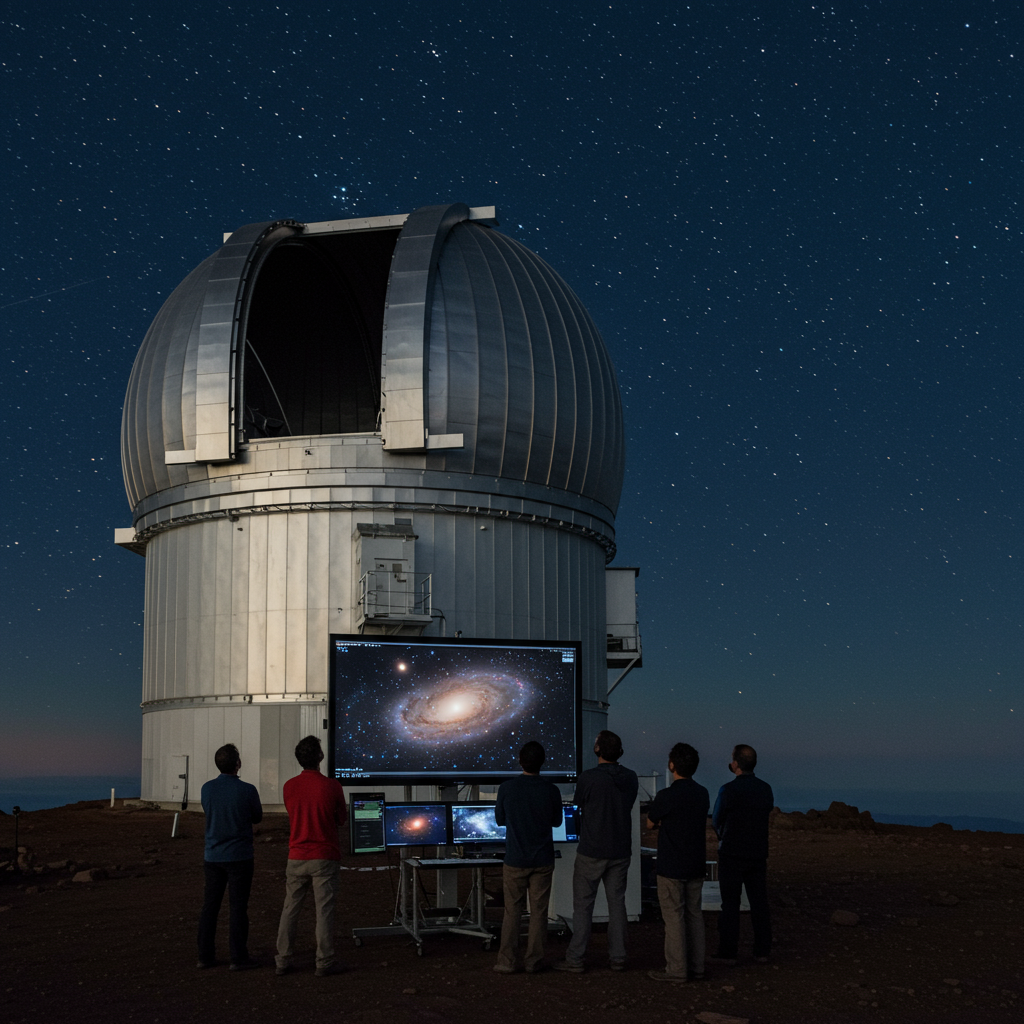Humanity is getting an unprecedented new view of the cosmos! The Vera C. Rubin Observatory, perched high in the Chilean Andes, has unveiled its highly anticipated first images, offering a glimpse into the power of what’s set to be the most informative map of the night sky ever assembled.
This monumental release marks a significant milestone – the “first light” moment for the observatory’s revolutionary camera and telescope system. While full scientific operations are slated to begin later this year, these initial images demonstrate the facility’s extraordinary capability to capture the universe in breathtaking detail across vast areas of the sky.
What Makes the Vera C. Rubin Observatory Unique?
Jointly funded and operated by the U.S. National Science Foundation (NSF) and the U.S. Department of Energy (DOE), the Rubin Observatory is no ordinary telescope. Named in honor of trailblazing astronomer Vera Rubin, whose work provided crucial evidence for dark matter, the observatory boasts:
An 8.4-meter primary mirror designed for wide-field views.
The world’s largest digital camera – a staggering 3200 megapixels (3.2 gigapixels). This single camera is so powerful that a full image requires the display space of 400 ultra-high-definition TV screens!
An ideal location on Cerro Pachón in northern Chile, known for its high altitude and exceptionally clear, dry skies.
These features are specifically tailored for the observatory’s ambitious core mission: the Legacy Survey of Space and Time (LSST).
The Legacy Survey of Space and Time (LSST): A Decade-Long Cosmic Movie
The LSST is a planned 10-year endeavor to systematically survey the entire southern night sky. Rubin will continuously photograph the sky, revisiting areas every three to four nights. This relentless observation schedule will generate an estimated 20 terabytes of data every single night, creating what scientists are calling “the largest astronomical movie of all time.”
Over its operational decade, the observatory expects to document around 40 billion celestial objects and collect trillions of individual measurements. This immense, freely available dataset is poised to revolutionize nearly every area of astronomy.
A First Look at Unprecedented Views
The first public images offer a taste of the LSST’s potential. Initial photos include detailed views encompassing millions of galaxies – for instance, one comprehensive first image captured approximately 10 million galaxies within and around the Virgo Cluster, many of which had never been seen before.
These stunning visuals highlight the observatory’s unique ability to achieve both great depth (seeing faint and distant objects) and incredibly wide area coverage simultaneously. This contrasts with previous surveys that often had to sacrifice one for the other.
Unlocking the Universe’s Biggest Mysteries
The Rubin Observatory and the LSST are fundamentally designed to address some of the most profound questions in cosmology and astrophysics. Key scientific goals include:
Understanding Dark Energy and Dark Matter: These mysterious components make up about 95% of the universe’s mass-energy but remain largely unknown. Rubin will map the distribution of billions of galaxies to study the growth of the universe’s large-scale structure (the cosmic web, dominated by dark matter) and measure its expansion history, potentially testing and refining the standard model of cosmology.
Planetary Defense: The continuous survey will be highly effective at discovering and tracking near-Earth objects (asteroids and comets). Early observations have already identified over 2,000 previously unknown asteroids, and projections suggest Rubin could ultimately find around 5 million new asteroids – roughly five times the total number discovered in the past two centuries.
Exploring the Dynamic Sky: By repeatedly imaging the same areas, Rubin will capture changes over time, revealing transient events like exploding stars (supernovae), faint variable stars, and potentially the electromagnetic counterparts to gravitational wave events.
Mapping Our Milky Way and Beyond: The survey will provide detailed data on the structure of our own galaxy, discover new dwarf galaxies and “unconventional objects” in our galactic neighborhood, and shed light on stellar evolution, including potentially finding thousands of faint brown dwarfs (“failed stars”).
Searching for the Unknown: The vast dataset could help in the search for undiscovered planets in the outer solar system (like the hypothesized “Planet Nine”) and potentially reveal entirely new cosmic phenomena scientists haven’t yet imagined.
The Start of a New Era
Officials and scientists alike express immense excitement for this “discovery machine.” The release of these first images represents the successful demonstration of the observatory’s cutting-edge technology and its readiness to begin its transformative 10-year mission. The volume and quality of data expected from Rubin promise to redefine our understanding of the cosmos, offering stargazers, scientists, and the public a view of the universe like never before. Get ready for a decade of unprecedented cosmic revelations!




